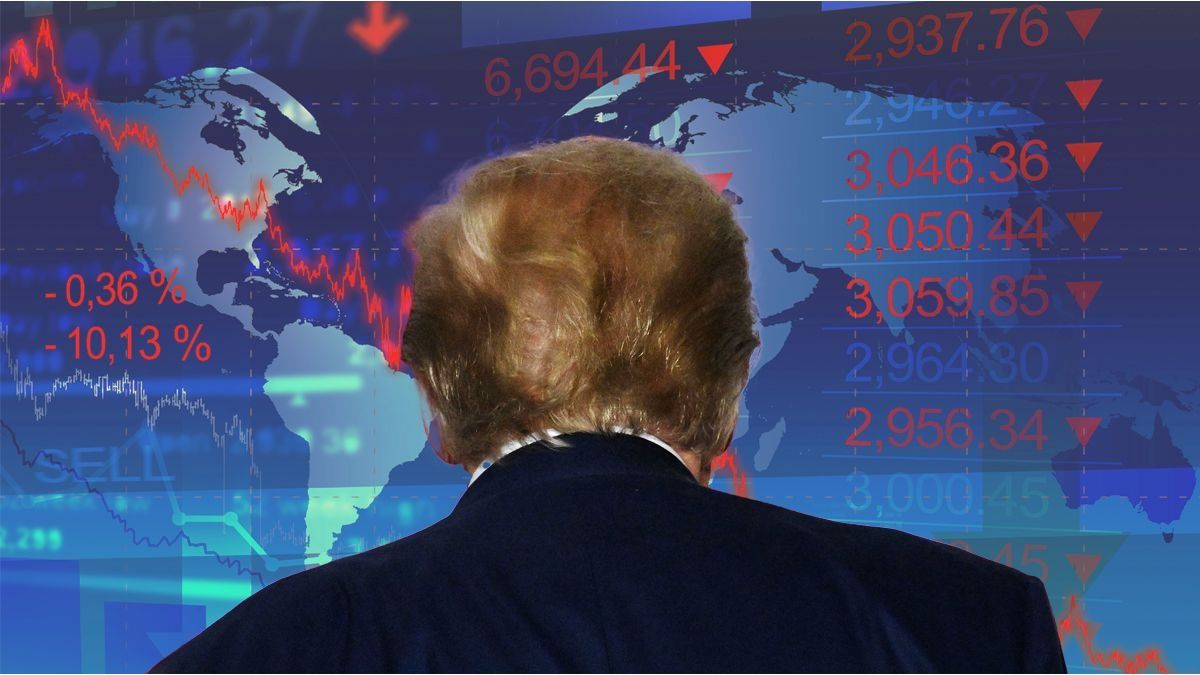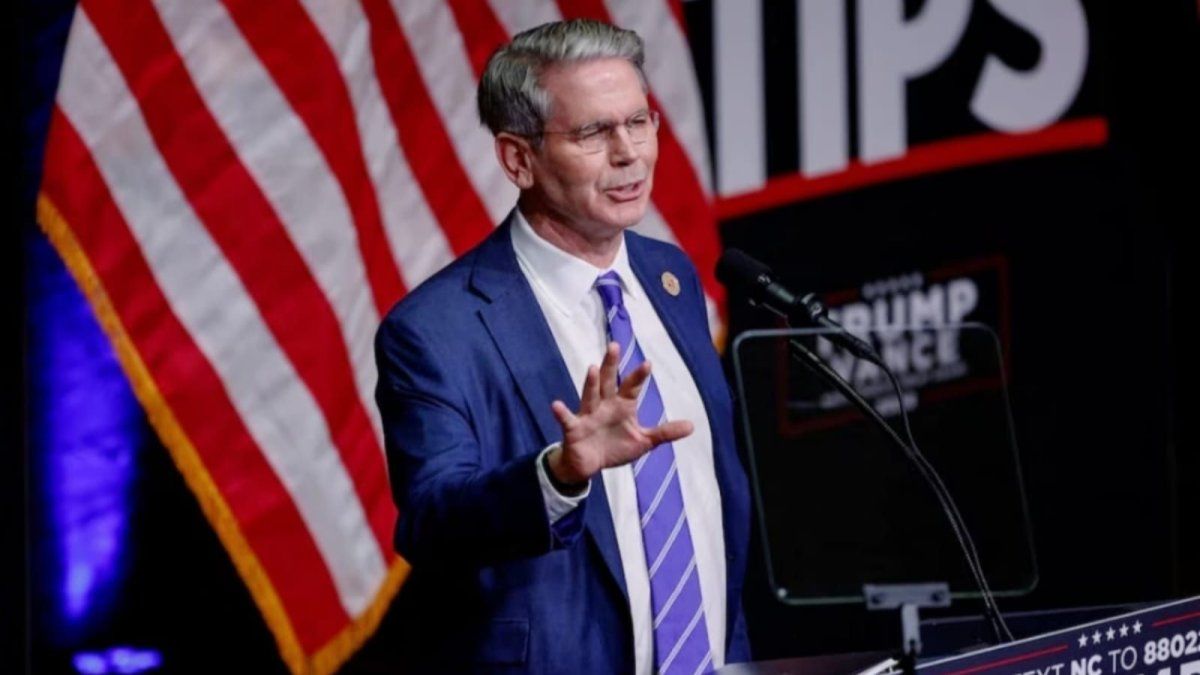Donald Trump recides in the threats of a commercial war. The markets and China show you that it does not seem to be the right path.
Donald Trump It does not resign and embesire again. Frustration does not deprive him of making threats. The war of trade that dreamed – and that deployed with maximum intensity on April 2 when he extended his theater of operations to the whole world – was lost on April 9. There is not much I can do. The self -inflicted damage was so great that it had to improvise a truce and freeze the application of reciprocal tariffs. In the case of China, the mutual encumbrances continued to climb with ferocity, but what froze was bilateral trade, an even worse strategic situation. The markets forced transient peace in April, it was not the planning or free will of the commander in chief. Above all, the joint debacle of the shares, the bonds and the dollar. The massive capital escape – the violent irruption of the country risk in the US – forced to stop the march. To continue the Sell america merode the catastrophe. Trump understood in time, and reculled before provoking a moment Lehman.
The content you want to access is exclusive to subscribers.
The truce is exhausted, and the thaw time came. The closure of trade with China is unsustainable, especially for the US. Washington quickly exempt the importation of smartphones and laptops and other electronic consumer products that have become indispensable in everyday life. It is your Achilles heel. A war of attrition, like the one that Trump imagined, does not win the most powerful but that capable of supporting more deprivations. It is Vietnam’s lesson (but Trump there hit the foul). The president did not promise his electorate neither blood nor sweat nor tears. The population voted for an improvement in employment, lower prices and extra collection for tariffs that foreigners would pay. None of that is possible. But the commercial war is much worse. It is a stagning shock that persists can push a buoyant economy to the recession along with a sharp rise in inflation. They are no longer just the markets, the health of the economy forces to choose peace.


That is why, in just one week, the White House hurried two emblematic agreements. One, with Great Britain. Another, the most important, with China, the country that threatens its supremacy. In the campaign, Trump defined his aspiration. Charge a 10% tariff to everyone, and 60% to China. What are the brand new arrangements? London closed at 10%. And Beijing, who exploded in his favor the presidential urgency, also. Plus the 20% tariff that brought from drag (for fentanyl) adds 30%. They are precarious treatment, there is nothing written, and they leave out the discussion of the sectors. But Trump used them as strong ads. Its need is evident: to restore trade flows and clear uncertainty. The corollary is transparent. No country of the hundreds that are waiting will want to obtain a tariff higher than 10%. The 30% charged to China is the roof, which the enemy pays. And time is an ally. The vision in Tokyo and Brussels is that there is no reason to hurry or make great concessions. It is convenient to pay more attention to the discussion of the detail than to leave it for later.
Trump enraged on Friday. He is not satisfied with the decisions he made. Even less with its consequences. China challenges him. It retouches the provision of rare earths against what had been expressly agreed. Negotiations with Europe do not advance. Japan, the first to approach, is now reluctant. The original idea was to collect tariffs, but, first of all, promote import substitution and increase local manufacturing production. And the 10% tariff is not such a powerful incentive. Trump, dissatisfied, exploded with new threats. It is not enough for Apple to move part of the manufacture of the iPhone from China to India. He will apply, he said, an extra 25% tariff to any device that is not produced in the US. And this applies to competition, Samsung and so on. Just manufacturing them locally is not possible. It would have been achieving it for years (more than one presidential mandate) and could cost the triple. It will not happen, although the president puts the cry in the sky.
Trump can apply the 25% tariff if you want, but you must withstand the adverse reaction of the population to the highest prices. Which avoids punctually since its first period. The president also reacted against the neglect of the European Union. And “recommended” the application of a 50%tariff. Which is still a new courtesy. Trump, before, imposed the Manu Militari tariffs. Who do you recommend? To your subordinates? Will the European Union pay a taller tariff? It makes no sense. Deviating trade towards Beijing will never be your intention.
The markets reacted very badly. Is the story repeated? Yes, like Farsa. It is a desperate attempt to start a guerrilla war. But Trump is no longer for sustained combat. China showed it. If you want to get advantages it must be in the peace negotiation. Hostilities can serve to condition remiss will, but have a limit: market tolerance. If they retail the tone of voice must be lowered.
Trump’s toxic agenda is not exhausted with tariffs. In Congress pushes a tax reduction package that dangerously increases the deficit and also bristles markets. After April, the oven is not for buns. No matter what the Congress votes, the bond market already anticipated its non -positive vote. The failure of the last auction of 20 -year Treasury titles is a warning, one more of many (such as Moody’s’s decision to remove the last AAA rating in force to the sovereign debt). The treasuries stock added 16 billion dollars at the end of 2016. Today it approaches 30 billion. In the campaign, and before Trump assumed, the Fed lowered 100 base points, and long rates climbed 120. It is a strong message: there is no appetite to finance a growing fiscal red.
Politics looks the other way and insists. With the veto of the markets, it pursues a lost cause in advance. The approval of the tax package in the lower house and Trump’s tantrums, this week, thus reopened another episode of Sell America. The bonds melted, the 30 -year -old rate drilled the 5% roof (fleetingly reaching 5.15%), and the bag had to undertake a neat setback. The economy can fall into a recession if the storm grows up, but the long rates are fired. And the dollar sinks, again to the walks. It flirts with the worst of the worlds, without need. He already said here: Treasury Secretary Besent must exert his influence on fiscal matters and avoid the fire, now that it is feasible; Before having to run to turn it off.
Source: Ambito
David William is a talented author who has made a name for himself in the world of writing. He is a professional author who writes on a wide range of topics, from general interest to opinion news. David is currently working as a writer at 24 hours worlds where he brings his unique perspective and in-depth research to his articles, making them both informative and engaging.




